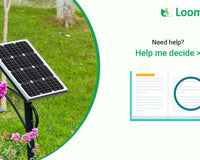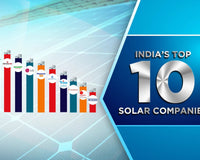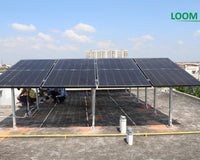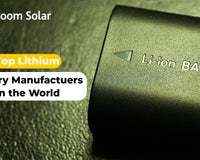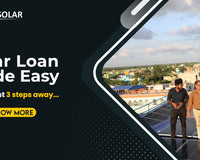A solar system is the collection of solar panels, inverter, battery, and balancing of system. The light from the sun falls on the solar panels from where electricity is generated. This DC from the sun is converted into AC with the help of the inverter, which is then used by consumers in their homes or any commercial establishment. There are 4 types of solar system available in the market:
1. Off Grid Solar System: It’s also known as standalone solar system which is used for getting electricity 24x7 anywhere. No permission is required to install this solar system in home and office. It is ideal for locations suffering from power cut problems and there is no grid power, such as hills and semi-rural areas. In case of off-grid solar system, the power generated can be stored in batteries for use at a later part of the day. Due to batteries, the price of this solar system is generally higher. If you install a solar system of less than 1 kW, then most solar inverters will be of PWM based technology. If installing a solar system of capacity 3-10 kW then you should use a MPPT based inverter.
2. On Grid Solar System: It’s also known as grid connected or grid tied solar system which is used for saving electricity bill in office, school, factory, hospital, etc. An on-grid solar system works along with the grid and hence any excess or deficiency of power can be fed to the grid through net metering. If using this system, you will always have power either from the solar system or from the grid. They do not have batteries. In an on-grid solar system, solar panels will continue to produce power during the day.
This power can either be used instantly or exported to the grid with no backup for power outages. If at any time the system runs out of power, it draws the same from the electricity grid. Hence, a user will never run out of power in this case. Since an on-grid solar system does not require batteries, it is cheaper to install when compared to an off-grid system. It is less costly when compared to other solar systems. It involves less maintenance and generally has a longer life when compared to an off-grid system. This system can be used with string, micro or hybrid inverters.
3. Hybrid Solar System: A hybrid solar energy system is a combination of on-grid and off-grid solar systems. It is basically a grid connected system with a battery backup. So, it has the advantage of both storing excess energy in the battery as well as selling the surplus energy generated to the grid.
4. Direct Solar System: If a person wants to run his appliance like water pump, atta chakki, etc. through a solar panel, he can use a Direct Solar system. Solar panels and VFD are two main components in this kind of system.
5. Upgrade Solar System: If you already own an inverter battery, you can upgrade to a solar system by adding solar panels and charge controller to the setup.
6. Home Lighting System: If a user wants to use solar lighting for emergency situations like power cut, he can use a solar home lighting system.
It is very important to first know your energy requirement, the type of appliances that can run through a solar system and hence the size of the system. The dimensions and weight of the panels and mounting structure, panel efficiency all are important considerations for arriving at the right solar system for your home/ office/ shop. The amount of sunlight that your establishment gets is another very important factor that can determine the efficiency of your solar system.





